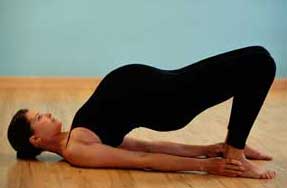Numerous studies have shown that pregnant women who exercise regularly are less likely to suffer from varicose veins, headaches, high blood pressure, edema, and other complications. They also experience easier childbirth and fewer delivery-related complications.
 |
|
(Image: bbc) |
Childbirth is a significant challenge for a woman’s health. From the moment a woman carries the seed of life until the child is born, her body undergoes numerous physiological and psychological changes.
Physiological changes can easily transition into pathological issues. For example, women with poor health who have given birth multiple times may have weak abdominal muscles and a lax uterus, making them susceptible to uterine atony, which can cause heavy bleeding and sometimes necessitate surgery.
The health of the fetus heavily depends on the mother’s health. During pregnancy, not only do nutritional and vitamin needs increase, but oxygen demands do as well. The fetus is highly sensitive to conditions of oxygen deprivation. If the mother experiences weak breathing or difficulty breathing for any reason, the blood supply to the fetus decreases, prompting the fetus to kick more often. This is a sign of the fetus “crying out for oxygen.” Prolonged deprivation can significantly impact fetal development and the child’s health at birth.
Exercising during pregnancy is a proactive measure to enhance the mother’s health, prepare her physically for easier and safer childbirth, and also to nourish the fetus through the mother.
What type of exercise is appropriate?
In the first three months, when the fetus has not yet firmly attached to the uterine wall, exercises should be very gentle. It is advisable to perform movements that develop and strengthen the muscles involved in childbirth, such as the pelvic floor muscles, abdominal muscles, and back muscles; and to increase the mobility of the pelvic joint. During pregnancy, all forms of intense physical training should be avoided, particularly competitive sports.
From the fourth to the seventh month, swimming can be beneficial, performed at a slow, relaxed pace, with breaststroke being the best option. Swimming is a comprehensive form of exercise that directly strengthens the muscles involved in childbirth. While swimming, the arms and legs naturally coordinate with breathing, allowing the body to be refreshed by air and water, leading to a gentle massage effect that enhances circulation, which is very beneficial for health. Avoid swimming for long periods, with each session not exceeding 20 minutes. Do not swim in stagnant or dirty water, where bacteria and fungi may cause illness. Jumping into water from heights is strictly prohibited.
In addition to exercising, pregnant women should take daily walks in clean, fresh air. It is better to walk shorter distances, taking breaks in between, rather than going too far.
From the seventh month onward, exercise should be approached with caution, as the fetus is now larger. Overexertion or causing strong jolts to the body can lead to miscarriage or preterm labor.
Exercise should be tailored to each individual’s health and pregnancy condition. If there are any changes in health, even minor ones, it is essential to consult a healthcare professional.
Who should avoid exercising during pregnancy?
-
When experiencing pregnancy-related complications (high blood pressure, edema, albuminuria).
-
Cardiovascular disease in decompensated stages (heart failure).
-
Progressive pulmonary tuberculosis.
-
Acute infections.
-
Neurological diseases.
-
Bleeding during pregnancy.
-
Polyhydramnios.
-
Genital infections (swimming should be avoided).
-
Experiencing abdominal pain after exercising.
-
For other medical conditions, consult a healthcare professional.
Dr. Nguyễn Kim Giang


















































